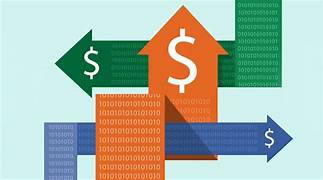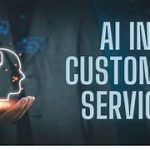AI-Driven Dynamic Pricing Strategies: Transforming Pricing Models for the Future
Dynamic pricing has become an essential tool in the modern business landscape. By adjusting prices in real-time based on market conditions, demand, competition, and customer behavior, businesses can optimize their revenue and remain competitive. Traditionally, pricing models were static, with businesses setting prices based on historical data, market trends, or competitor benchmarks. However, with the rise of Artificial Intelligence (AI), businesses now have access to advanced technologies that can automate and refine dynamic pricing strategies in ways that were once unimaginable.
This article explores the concept of AI-driven dynamic pricing, its benefits, how it works, real-world applications, challenges, and its future potential in shaping pricing strategies across industries.
What is AI-Driven Dynamic Pricing?
AI-driven dynamic pricing is the use of machine learning algorithms, data analytics, and real-time market information to adjust prices for products or services dynamically. Unlike traditional pricing models that are fixed for a period, AI-driven dynamic pricing allows businesses to modify prices on the fly based on factors such as:
- Supply and demand: Changes in demand for a product can trigger price adjustments.
- Competitor pricing: Monitoring competitor prices and adjusting to remain competitive.
- Customer behavior: Analyzing customer data, including purchase history and browsing patterns, to determine optimal pricing.
- Market conditions: Economic factors, seasonal trends, and even weather conditions can influence prices.
The goal of AI-driven dynamic pricing is to find the optimal price point that maximizes profitability while remaining attractive to customers.
How AI-Powered Dynamic Pricing Works
AI-powered dynamic pricing is rooted in sophisticated algorithms and large datasets. Here’s an overview of how it functions:
1. Data Collection
AI pricing systems begin by collecting a vast amount of data from multiple sources. These include historical sales data, customer preferences, competitor prices, market trends, and external factors (such as weather or special events).
2. Machine Learning Models
Machine learning models analyze this data and recognize patterns that influence pricing. Over time, these models become more accurate, learning from new data inputs to refine pricing decisions. Key machine learning models used in dynamic pricing include:
- Regression analysis: Helps predict price elasticity and determine how sensitive customers are to price changes.
- Time-series forecasting: Analyzes past trends to forecast demand and set optimal pricing.
- Reinforcement learning: Continuously adjusts pricing based on real-time results to maximize revenue.
3. Price Optimization
AI-driven systems can test different price points (A/B testing) to identify the most profitable one. The system adapts to real-time market conditions, competitor pricing, and consumer behavior, adjusting prices as needed.
4. Automation
Once the pricing model is set, AI systems automate the process, continuously adjusting prices without human intervention. This ensures that businesses can respond quickly to shifts in demand, competition, or customer preferences.
Benefits of AI-Driven Dynamic Pricing
AI-driven dynamic pricing offers several advantages over traditional pricing models, including:
1. Increased Revenue and Profitability
AI systems optimize prices in real-time, ensuring that businesses capture maximum revenue based on fluctuating demand. This flexibility enables companies to adjust prices during peak demand periods or offer discounts during off-peak times to drive sales.
2. Improved Customer Experience
Dynamic pricing ensures that prices reflect the current market conditions, which can lead to better alignment between customer expectations and business offerings. By offering personalized prices or promotions, businesses can foster customer loyalty.
3. Competitive Advantage
By constantly monitoring competitors and adjusting pricing accordingly, businesses can maintain a competitive edge. This is particularly important in industries like e-commerce, travel, and hospitality, where price comparison is common.
4. Optimization of Inventory Management
Dynamic pricing enables businesses to adjust prices based on stock levels. For example, a retailer can lower prices for items with excess inventory or raise prices for products that are running low to maximize revenue before running out.
5. Market Responsiveness
AI systems can react to real-time changes in market conditions. For instance, during a surge in demand due to a holiday or special event, prices can be adjusted automatically, enabling businesses to capitalize on the increased interest.
Real-World Applications of AI in Dynamic Pricing
AI-driven dynamic pricing is increasingly being adopted across various industries. Below are some real-world applications:
1. E-Commerce
Online retailers like Amazon, eBay, and Walmart use AI to optimize prices for products in their catalogs. By analyzing consumer browsing behavior, past purchases, competitor prices, and market trends, these platforms can offer personalized pricing and discount strategies that maximize conversions and sales.
2. Travel and Hospitality
Airlines, hotels, and car rental companies have long used dynamic pricing to adjust fares and room rates based on demand, seasonality, and competitor pricing. AI allows for more granular control, adjusting prices dynamically in real time to reflect customer demand, booking patterns, and other factors.
- Example: Airlines use AI to adjust ticket prices based on factors like booking window (how far in advance tickets are bought), seat availability, and competitor rates.
3. Ride-Sharing Services
Companies like Uber and Lyft use AI-driven surge pricing to adjust fares based on demand and availability of drivers. If demand spikes due to weather conditions, rush hour, or special events, prices increase to balance supply and demand.
4. Retail
Retailers use AI to dynamically adjust in-store and online pricing. For instance, brick-and-mortar stores can update prices based on local demand, while online retailers can use algorithms to adjust prices in response to changes in competitor pricing or consumer behavior.
- Example: Walmart uses AI to adjust prices in its stores and online, ensuring it remains competitive and maximizes revenue.
5. Subscription Services
Subscription-based companies, such as streaming platforms and SaaS providers, use AI to adjust pricing based on customer segments, engagement, and willingness to pay. This allows for tailored pricing strategies to maximize retention and lifetime value.
Challenges in AI-Driven Dynamic Pricing
Despite its advantages, implementing AI-driven dynamic pricing comes with certain challenges:
1. Data Privacy Concerns
Collecting vast amounts of customer data to fuel pricing models raises privacy issues. Businesses must ensure they comply with data protection regulations, such as the General Data Protection Regulation (GDPR), and be transparent about how customer data is used.
2. Consumer Perception
Frequent price fluctuations can cause frustration for consumers, particularly if they feel that prices are artificially manipulated. Businesses must strike a balance between dynamic pricing and maintaining customer trust.
3. Algorithmic Bias
AI models are only as good as the data they are trained on. If the data is biased or incomplete, it can result in unfair pricing strategies or perpetuate existing inequalities. Companies need to ensure that their algorithms are transparent and free from biases.
4. Competitive Risks
If competitors also use dynamic pricing algorithms, it can lead to price wars, where businesses continuously undercut each other. This could erode profit margins and create an unsustainable pricing environment.
5. Complexity in Implementation
Implementing AI-driven dynamic pricing systems requires substantial investment in technology, data infrastructure, and skilled personnel. Smaller businesses may struggle to adopt these systems due to resource limitations.
The Future of AI-Driven Dynamic Pricing
The future of AI-driven dynamic pricing looks promising, with several trends and innovations on the horizon:
1. Greater Personalization
AI will enable even more personalized pricing, where customers are offered different prices based on their behavior, preferences, and purchasing history. This level of customization could lead to more loyal customers and higher sales conversions.
2. Integration with Other Technologies
AI-driven dynamic pricing will increasingly integrate with other emerging technologies like blockchain, IoT, and augmented reality. These integrations could further enhance the real-time adjustment of prices based on a variety of factors.
3. Ethical Pricing Models
As AI pricing systems become more sophisticated, there will be greater focus on developing ethical pricing models that ensure fairness and transparency while maximizing profit. Regulators may also introduce guidelines to prevent exploitation of consumers through unfair pricing strategies.
4. Predictive Pricing
AI systems will move beyond simply reacting to demand and will begin predicting price trends before they occur, allowing businesses to set future prices more effectively.
Conclusion
AI-driven dynamic pricing has revolutionized the way businesses approach pricing, providing them with the ability to optimize revenue, improve customer experience, and stay competitive. As technology continues to evolve, dynamic pricing will become more personalized, predictive, and integrated into broader business strategies. However, businesses must navigate challenges such as data privacy concerns, algorithmic bias, and consumer perception to ensure that AI-driven pricing strategies are both effective and ethical. The future of dynamic pricing is bright, offering opportunities for businesses to leverage AI for smarter, more efficient pricing decisions.


